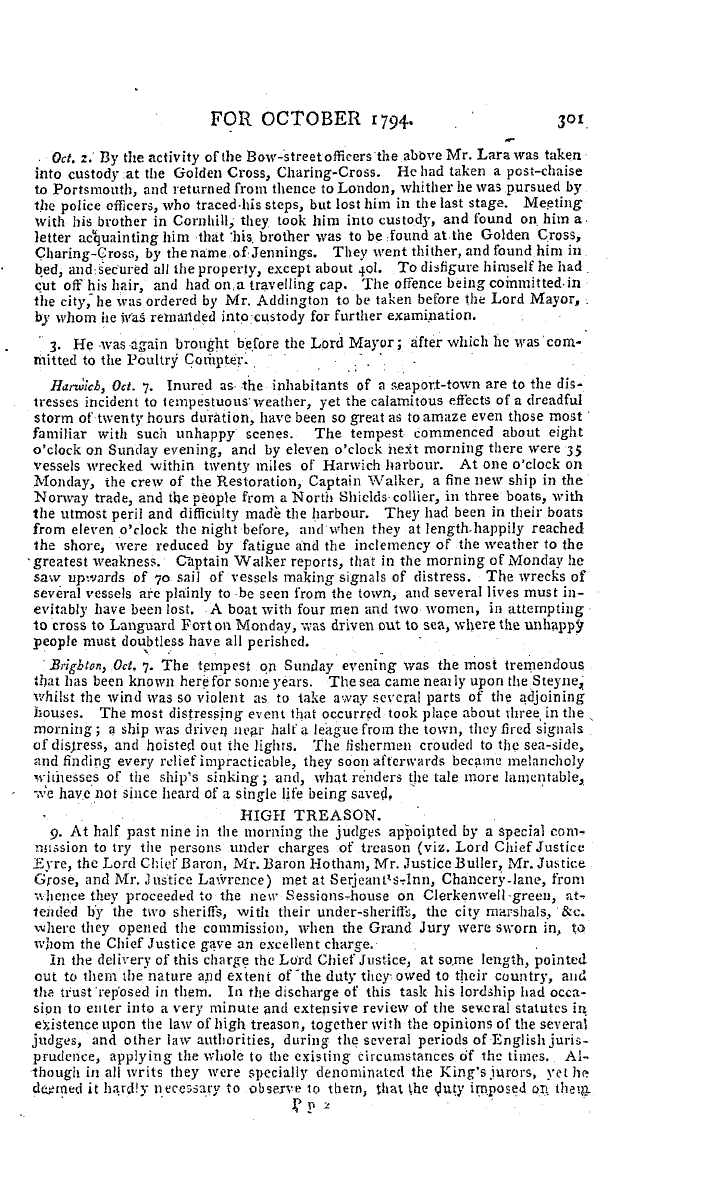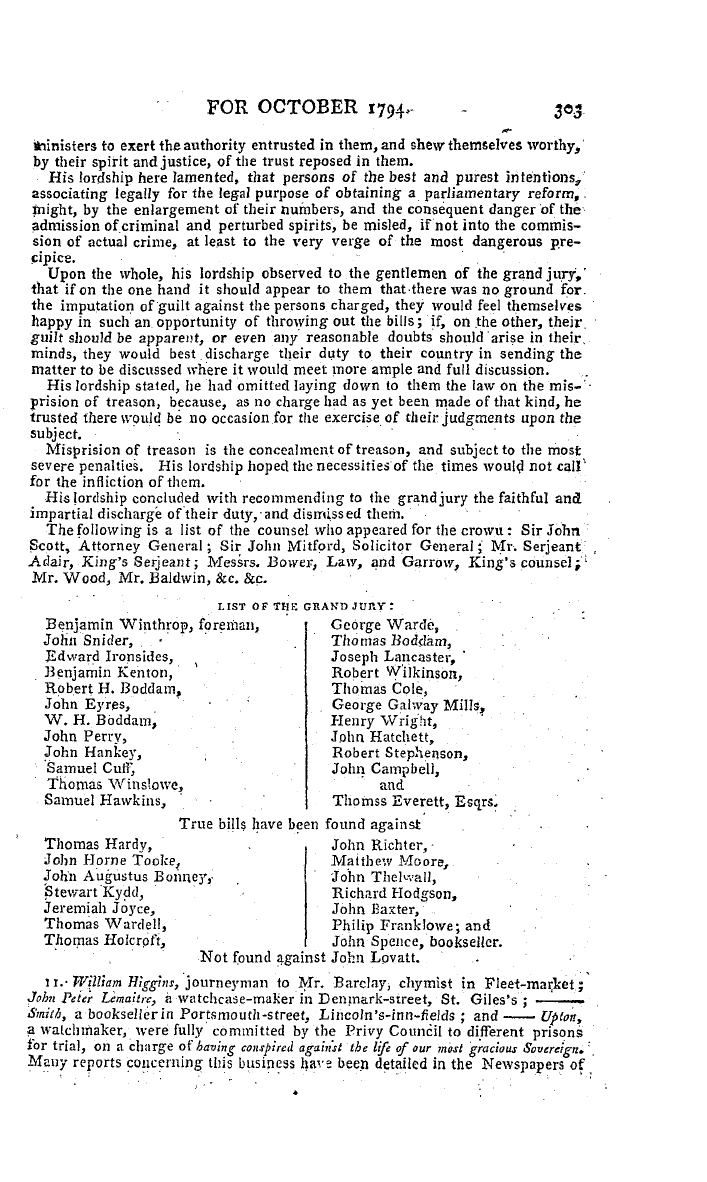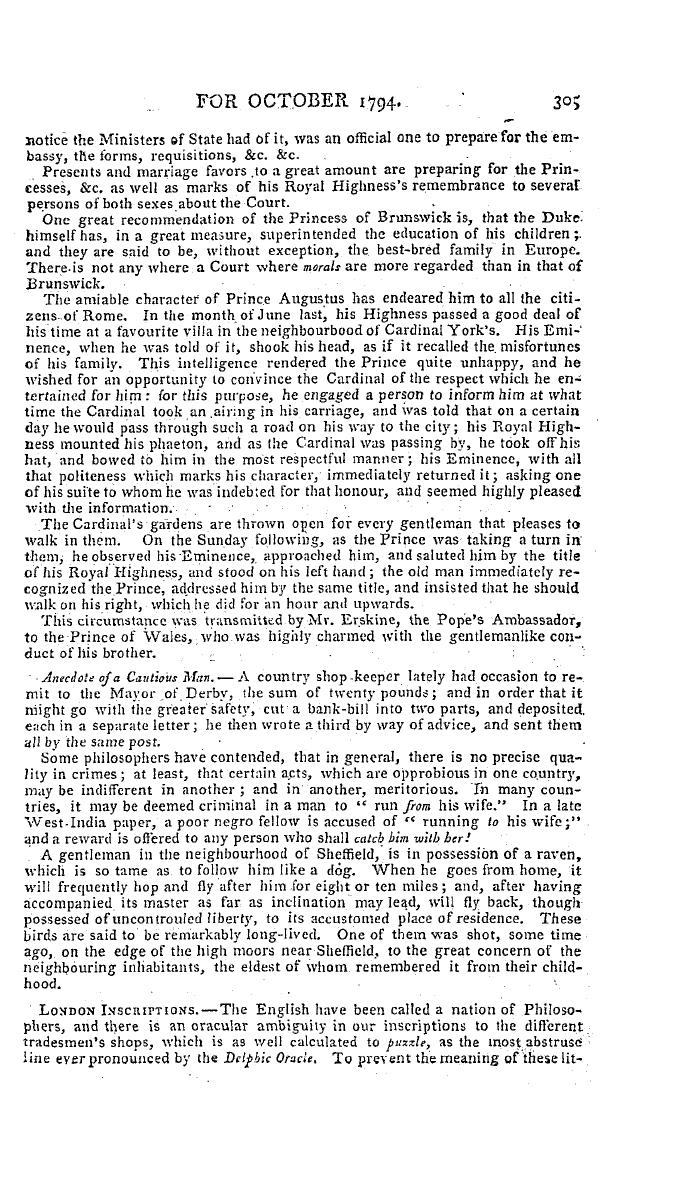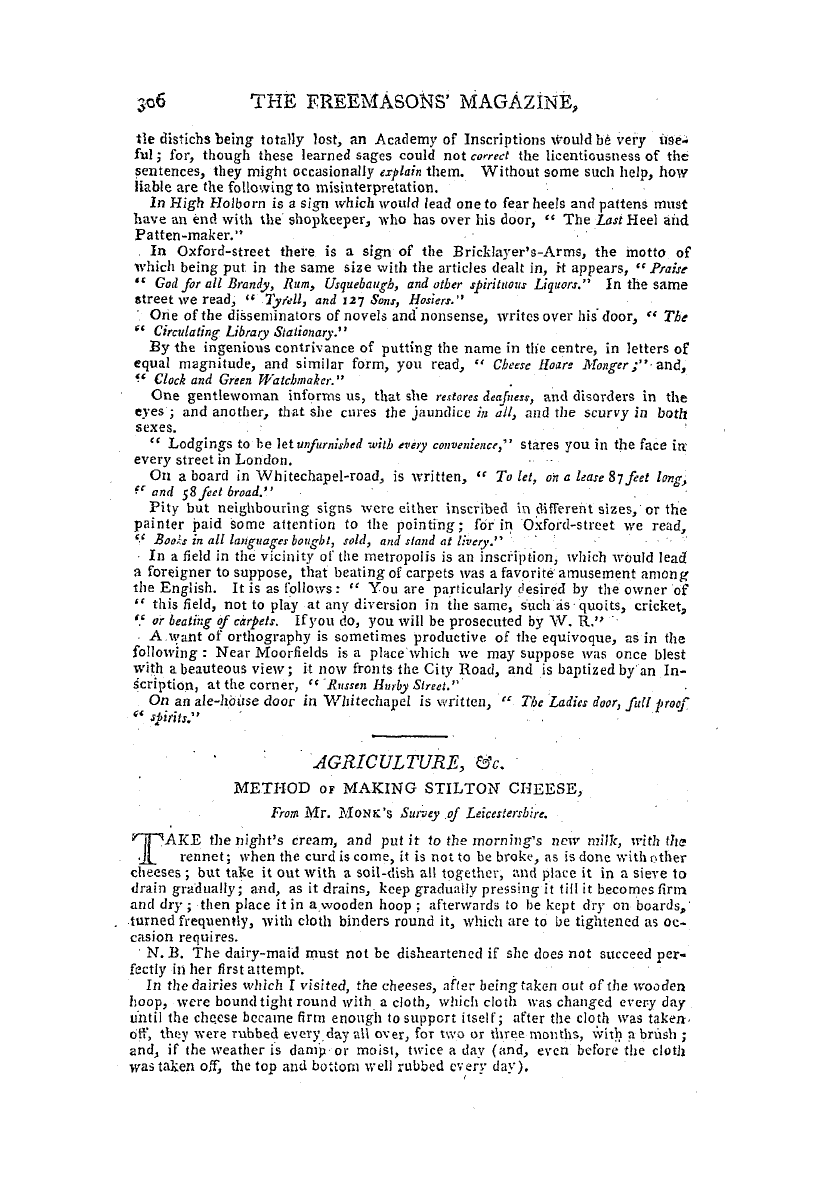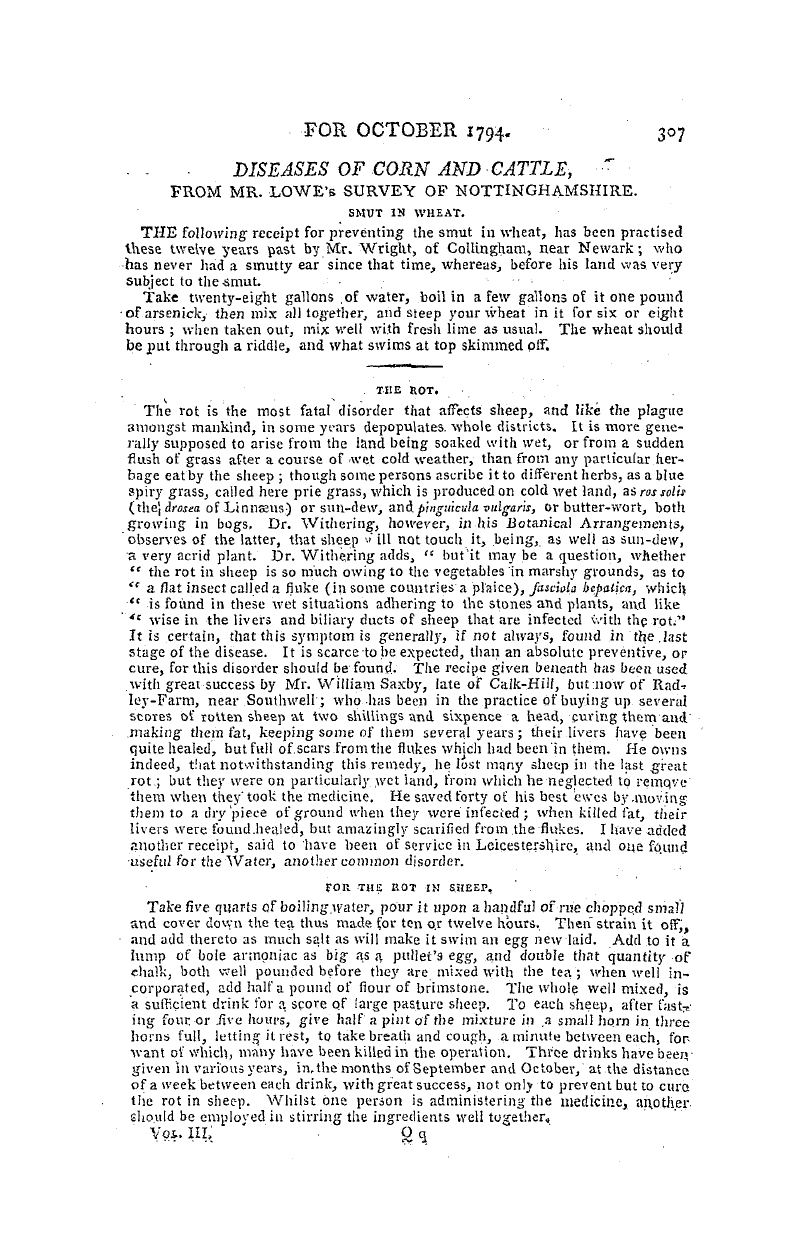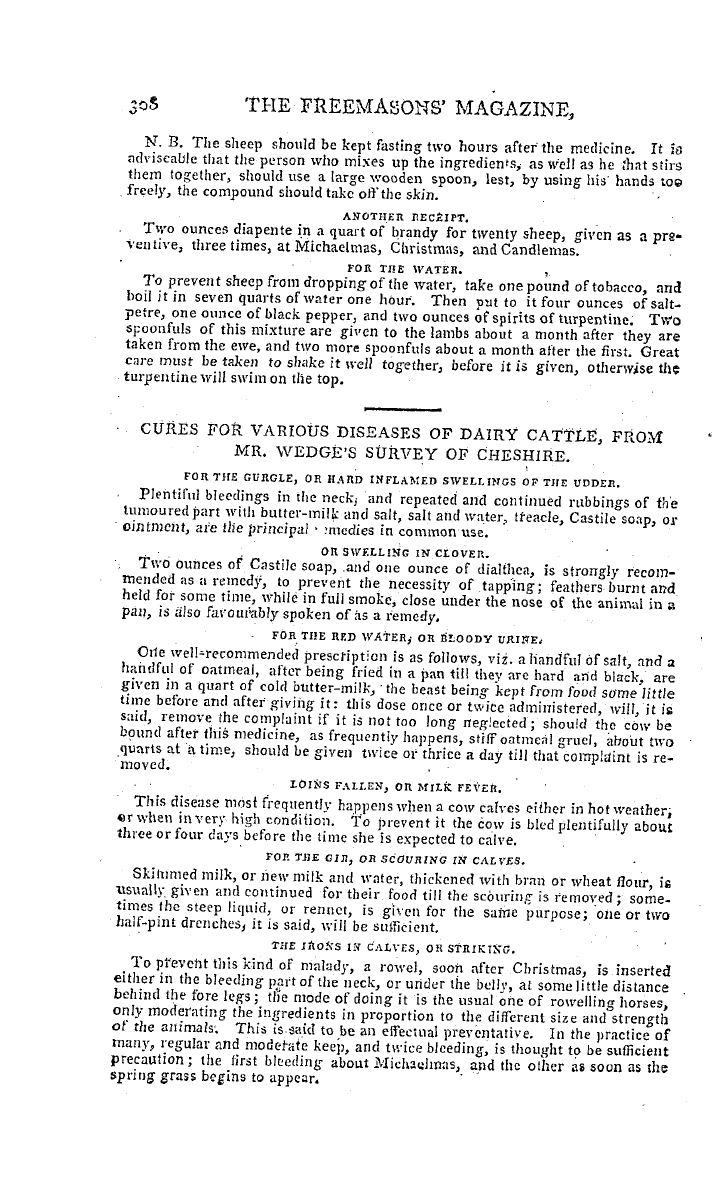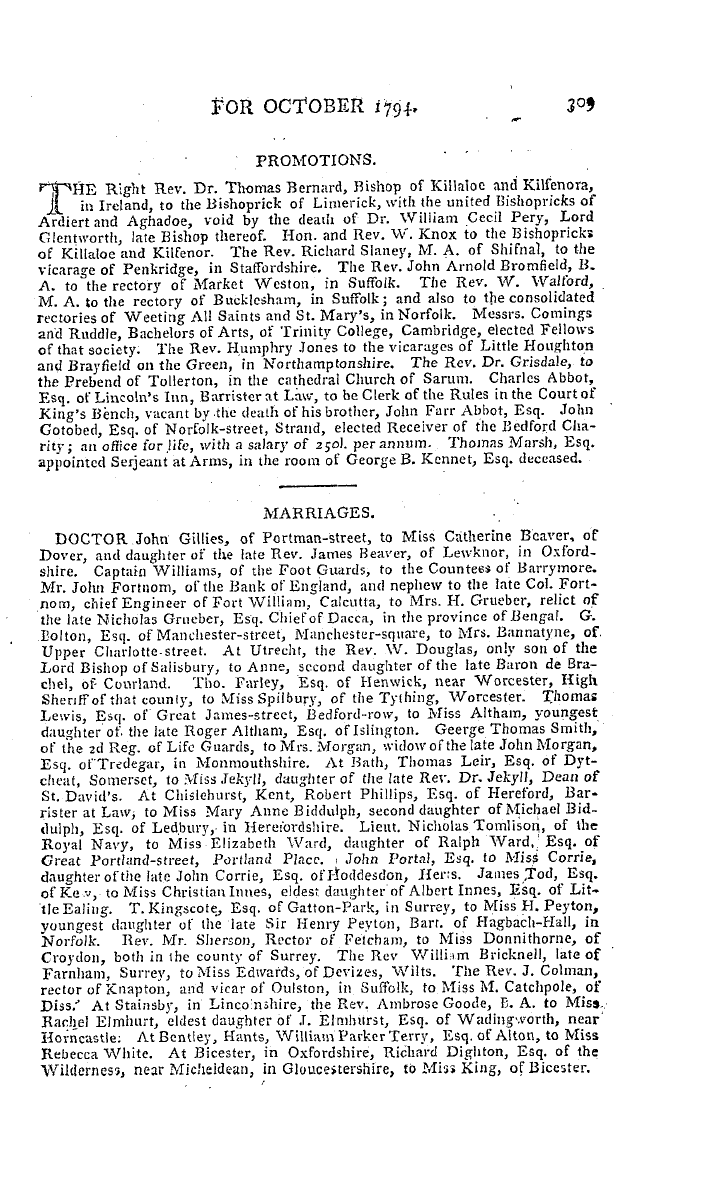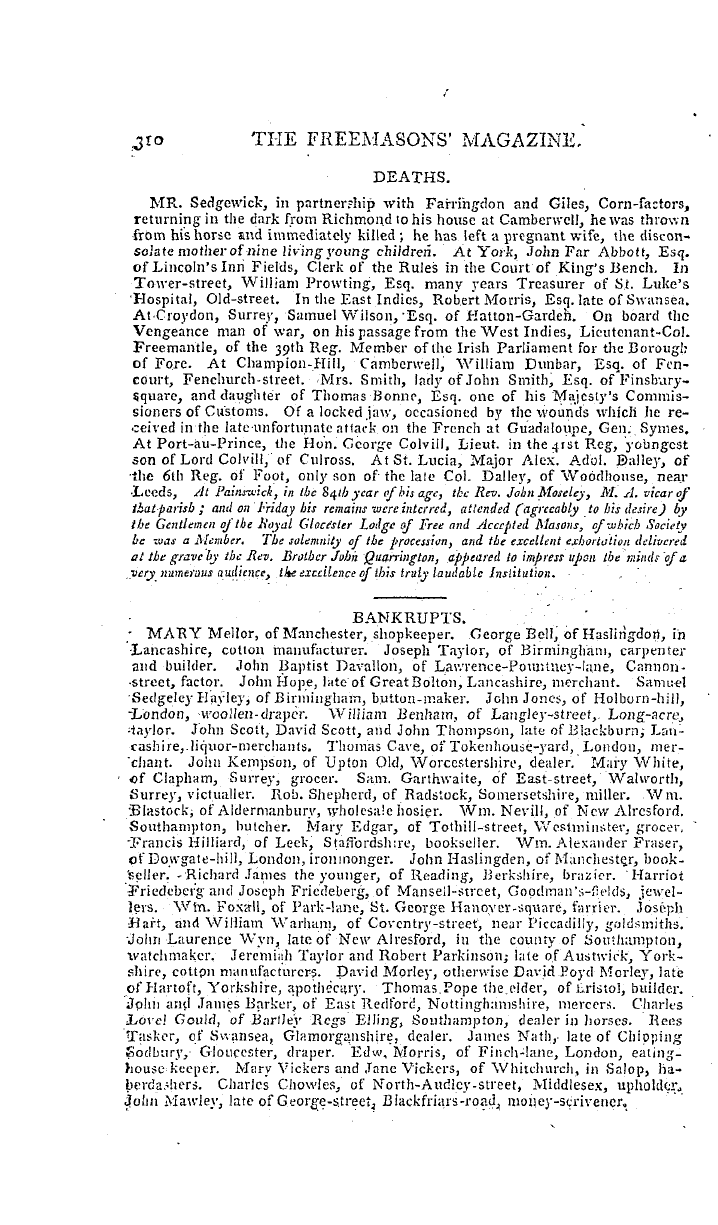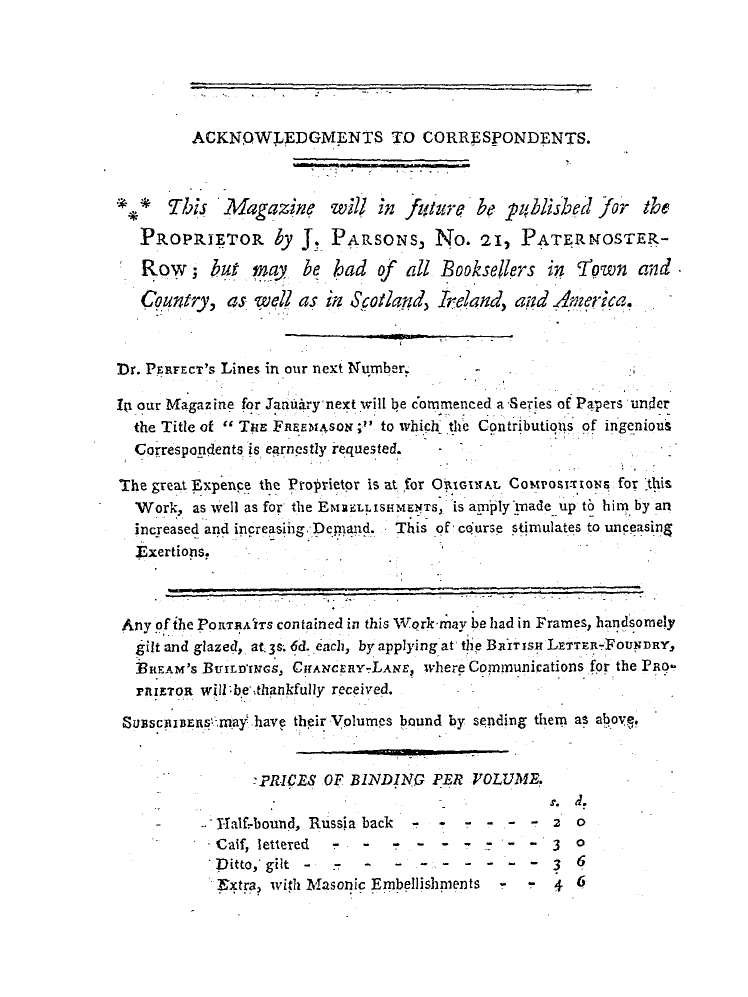Note: This text has been automatically extracted via Optical Character Recognition (OCR) software.
Diseases Of Corn And Cattle, From Mr. Lowe's Survey Of Nottinghamshire.
DISEASES OF CORN AND CATTLE , FROM MR . LOWE ' S SURVEY OF NOTTINGHAMSHIRE .
SMUT IN WHEAT . THE following receipt for preventing the smut in wheat , has been practised these twelve years past by Mr . Wright , of CaUuigham , near Newark ; who has never had a smutty ear since that time , whereas , before his land was very subject to the-smut . Take twenty-eight gallons . of water , boil in a few gallons of it one pound ofarsenick , then mix all together , and steep your wheat in it for six or eight hours ; when taken out , mix well with fresh lime as usual . The wheat should be put through a riddle , and what swims at top skimmed off .
. THE ROT . The rot is the most fatal disorder that affects sheep , and like the plague amongst mankind , in some years depopulates , whole districts . It is more generally supposed to arise from the land being soaked with wet , or from a sudden flush of grass after a course of wet cold weather , than from any particular herbage eat by the sheep ; though some persons ascribe it to different herbs , as a blue spiry grass , called here prie grass , which is produced on cold wet land , asros solis ( the ) dratta of Linnams ) or sun-dew , and pinguicula vulgaris , or butter-wort , both
growing in bogs . Dr . Withering , however , in his Botanical Arrangements , observes of the latter , that sheep ¦ ¦> ' ill not touch it , being ,, as well as sun-dew , a very acrid plant . Dr . Withering adds , " but'it may be a question , whether " the rot in sheep is so much owing to the vegetables in marshy grounds , as to " a flat insect called a fluke ( in some countries a plaice ) , fnsaola bepalica , which " is found in these wet situations adhering to the stones and plants , and like , fc wise in the livers and biliary ducts of sheep that are infected with the rot ;" It is certainthat this symptom is generallyif not alwaysfound in the . last
, , , stage of the disease . It is scarce to be expected , than an absolute preventive , or cure , for this disorder should be found . The recipe given beneath lias been used with great success by Mr . William Saxby , late of Calk-Hill , but : nowof Radley-Farm , near Southwell ; who-has been in the practice of buying up several scores of rotten sheep at two shillings and sixpence a head , curing them and making them fat , keeping some of them several years ; their livers have been quite healed , butfull of . scars from the flukes which had been in them . He owns indeedthat notwithstanding this remed he lost many sheep in the last great
, y , rot . ; but they were on particularly wet land , from which he neglected to remqve them when they ' tool ; the medicine . He saved forty of his best ewes by . moving them to a dry ' piece of ground when they were infected ; when killed fat , their livers were found . healed , but amazingly scarified from the flukes . I have added another receipt , said to have been of service in Leicestershire , and one found useful for the Water , another common disorder .
FOR THE ROT IN SHEEP . Take five quarts of boiling . water , pour it upon a handful of rue chopped small and cover down the tea thus made for ten or twelve hours . Then" strain it off ,, and add thereto as much salt as will make it swim an egg new laid . Add to it a lump of bole annoniac as big as a pullet's egg , and double that quantity of chalk , both well pounded before they are mixed with the tea ; when well incorporated , add half a pound of flour of brimstone . The whole well mixed , is
a sufficient drink for a score of large pasture sheep . To each sheep , after fas t * ing four or live hours , give half a pint of the mixture in a small horn in three horns full , letting it rest , to take breath and cough , a minute between each , forwant of which , many have been killed in the operation . Throe drinks have been given in various years , in , the months of September and October , at the distance of a week between each drink , with great success , not only to prevent hut to euro the rot in sheep . Whilst one person is administering the medicine , another should be emuloved in stirring the ingredients well together , Yoi- III , O q .
Note: This text has been automatically extracted via Optical Character Recognition (OCR) software.
Diseases Of Corn And Cattle, From Mr. Lowe's Survey Of Nottinghamshire.
DISEASES OF CORN AND CATTLE , FROM MR . LOWE ' S SURVEY OF NOTTINGHAMSHIRE .
SMUT IN WHEAT . THE following receipt for preventing the smut in wheat , has been practised these twelve years past by Mr . Wright , of CaUuigham , near Newark ; who has never had a smutty ear since that time , whereas , before his land was very subject to the-smut . Take twenty-eight gallons . of water , boil in a few gallons of it one pound ofarsenick , then mix all together , and steep your wheat in it for six or eight hours ; when taken out , mix well with fresh lime as usual . The wheat should be put through a riddle , and what swims at top skimmed off .
. THE ROT . The rot is the most fatal disorder that affects sheep , and like the plague amongst mankind , in some years depopulates , whole districts . It is more generally supposed to arise from the land being soaked with wet , or from a sudden flush of grass after a course of wet cold weather , than from any particular herbage eat by the sheep ; though some persons ascribe it to different herbs , as a blue spiry grass , called here prie grass , which is produced on cold wet land , asros solis ( the ) dratta of Linnams ) or sun-dew , and pinguicula vulgaris , or butter-wort , both
growing in bogs . Dr . Withering , however , in his Botanical Arrangements , observes of the latter , that sheep ¦ ¦> ' ill not touch it , being ,, as well as sun-dew , a very acrid plant . Dr . Withering adds , " but'it may be a question , whether " the rot in sheep is so much owing to the vegetables in marshy grounds , as to " a flat insect called a fluke ( in some countries a plaice ) , fnsaola bepalica , which " is found in these wet situations adhering to the stones and plants , and like , fc wise in the livers and biliary ducts of sheep that are infected with the rot ;" It is certainthat this symptom is generallyif not alwaysfound in the . last
, , , stage of the disease . It is scarce to be expected , than an absolute preventive , or cure , for this disorder should be found . The recipe given beneath lias been used with great success by Mr . William Saxby , late of Calk-Hill , but : nowof Radley-Farm , near Southwell ; who-has been in the practice of buying up several scores of rotten sheep at two shillings and sixpence a head , curing them and making them fat , keeping some of them several years ; their livers have been quite healed , butfull of . scars from the flukes which had been in them . He owns indeedthat notwithstanding this remed he lost many sheep in the last great
, y , rot . ; but they were on particularly wet land , from which he neglected to remqve them when they ' tool ; the medicine . He saved forty of his best ewes by . moving them to a dry ' piece of ground when they were infected ; when killed fat , their livers were found . healed , but amazingly scarified from the flukes . I have added another receipt , said to have been of service in Leicestershire , and one found useful for the Water , another common disorder .
FOR THE ROT IN SHEEP . Take five quarts of boiling . water , pour it upon a handful of rue chopped small and cover down the tea thus made for ten or twelve hours . Then" strain it off ,, and add thereto as much salt as will make it swim an egg new laid . Add to it a lump of bole annoniac as big as a pullet's egg , and double that quantity of chalk , both well pounded before they are mixed with the tea ; when well incorporated , add half a pound of flour of brimstone . The whole well mixed , is
a sufficient drink for a score of large pasture sheep . To each sheep , after fas t * ing four or live hours , give half a pint of the mixture in a small horn in three horns full , letting it rest , to take breath and cough , a minute between each , forwant of which , many have been killed in the operation . Throe drinks have been given in various years , in , the months of September and October , at the distance of a week between each drink , with great success , not only to prevent hut to euro the rot in sheep . Whilst one person is administering the medicine , another should be emuloved in stirring the ingredients well together , Yoi- III , O q .































































